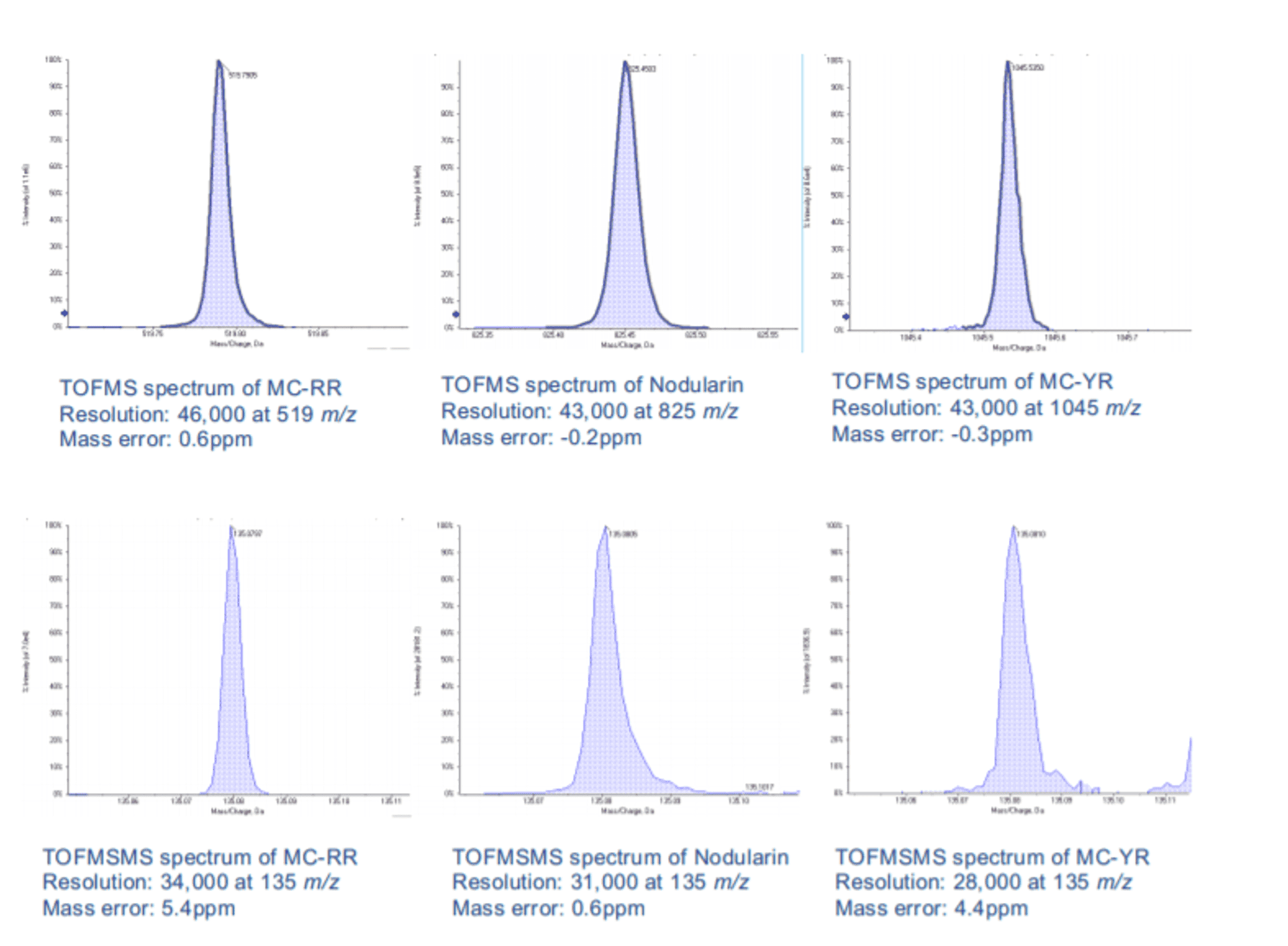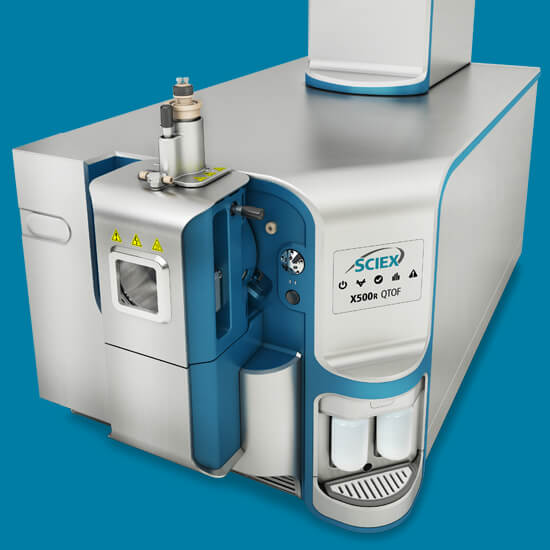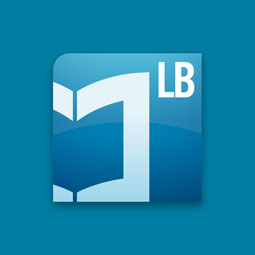富栄養化と呼ばれる現象は、淡水および海洋の生態系で有害なシアノバクテリアのブルームの自然発生を促進します (4)。これらのブルームは、構造的および物理化学的性質が多様な有毒代謝産物を生成します。頻繁に検出されるシアノトキシンには、ミクロシスチン、ノジュラリン、シリンドロスパーモプシン、神経毒などがあり、これらは生態系や人の健康に脅威を与えています (5)。これらの有毒なシアノバクテリアブルームの大量発生はさまざまな表層水源に存在しますが、ほとんどの人にとっての主な曝露経路は飲料水であり、規制当局から摂取勧告が出る可能性があります (6-8)。
たとえば、世界保健機関 (WHO) のミクロシスチン‐ LR (MC-LR) の暫定ガイドラインでは、上限値は 1 μg/L です (9)。米国環境保護庁(EPA)のMC-LRに対する10日間の飲料水健康勧告は、6歳までの乳幼児および子供は0.3μg/L、成人は1.6μg/Lを上限としています (10)。カナダでは、MC-LRの最大許容濃度(MAC)は1.5μg/Lです (11) 。
従来、表層水に含まれるこれらの毒素の分析には、高性能液体クロマトグラフィー (HPLC) と紫外線 (UV) 検出器を使用して分析されてきましたが、ガスクロマトグラフィー (GC) などの他の手法も用いられています。ただし、これらのアプローチには限界があり、特に交差汚染の可能性がある場合、偽陽性のリスクが高くなります。
バイオトキシン検出のための質量分析への移行
環境中の自然毒の化学構造の多様性を考えると、液体クロマトグラフィータンデム質量分析法 (LC-MS/MS) は、ミクロシスチンを含む広範囲の毒素を 1 回の分析で包括的に分析するのに最適なツールです。
LC-MS/MSを使用することで、以下の利点があります:
- 低濃度の毒素検出に対する感度の向上
- サンプル前処理の簡素化により、結果が得られるまでの時間が短縮される
- 多様なサンプルタイプに対応するための堅牢性の向上
- 結果の精度と信頼性を向上させるための特異性の向上
食品および飼料中のマイコトキシンおよび自然毒の検出に関する SCIEX ソリューションの詳細については、こちらをクリックしてください。



